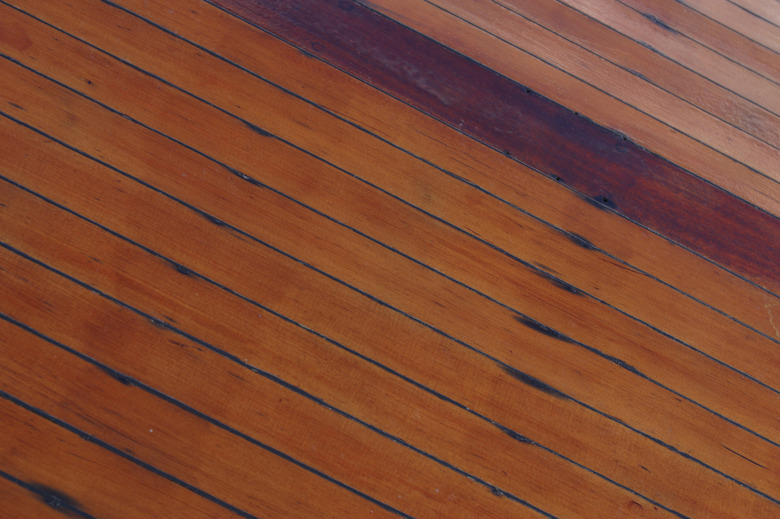Can You Stain Over Exterior Existing Stain?
An exterior stain job can last from 5 to 15 years, depending on your location, the work's exposure and the quality of the stain. It's possible to stain over existing stain and much easier than painting over it. As long as you clean and prepare the surface properly, you can do another long-lasting stain job. You also have several product choices, depending on the existing stain and how you want your home to look.
Stain Choices
Stain Choices
Exterior stains typically come in two finishes: semi-transparent and solid. Semi-transparent stain allows the grain and character of the underlying wood to show through. Solid stain looks more like paint; it's just thinner and doesn't obscure the texture of the wood as much. Don't use solid stain on a deck or any surface you want to walk on because it's too thin and won't hold up. You can use solid stain over existing solid or semi-transparent stain, but semi-transparent stain over solid stain will look strange and won't last. It's designed to penetrate wood and won't adhere well to a solid coating. Also, because semi-transparent stain allows the existing color to show through, its color will be influenced by the item's current color.
You may also choose between water-based (acrylic) and oil-based stains. All else being equal, if you choose a good-quality product and follow instructions for surface preparation and application, both will last equally well. Paint technology has advanced in leaps and bounds over recent decades, and water-based products rival, or are superior to, oil-based products in most situations. It's OK to use oil-based stain over water-based as long as you clean and prepare the existing surface well. Always check label directions or with the manufacturer; many stain formulas and application procedures differ somewhat.
Don't skimp on stain quality. The difference between a job that looks good for 5 years and one that holds up for 10 years and longer should cost you only a little more per gallon. For the best-quality materials and widest range of choices, purchase stain from a paint store where professional painters shop instead of a home improvement store.
Preparation and Application
Preparation and Application
It may be tempting to skip cleaning and preparation of existing stain. After all, it rarely peels and often doesn't look too bad. Stained wood is a great habitat for mildew and grime, however, especially if it has a rough texture. It needs to be cleaned really well. Use a scrub brush and detergent (some siding and deck washes remove mildew, even out the underlying color and clean all in one application) for small areas such as decks, or rent a power washer for a whole house. Most power washers have a detergent feed feature, allowing you to apply detergent and then blast it off with high-pressure water.
If you plan to apply water-based stain over existing wood, a day or two of drying is sufficient before applying the new stain. The wood doesn't need to be bone-dry. When using oil-based stain, allow about three days of dry weather. Drying time depends greatly on the location's relative humidity.
Stain can be applied by spray, roller or brush. It can be tricky to get an even finish when spraying or rolling semi-transparent stains, especially on smooth wood and decks. Plan on "back-brushing" by brushing the stain into the wood after spraying or rolling. Work in small enough sections so you can stop and back-brush while the stain is still wet, or have a partner work behind you.
